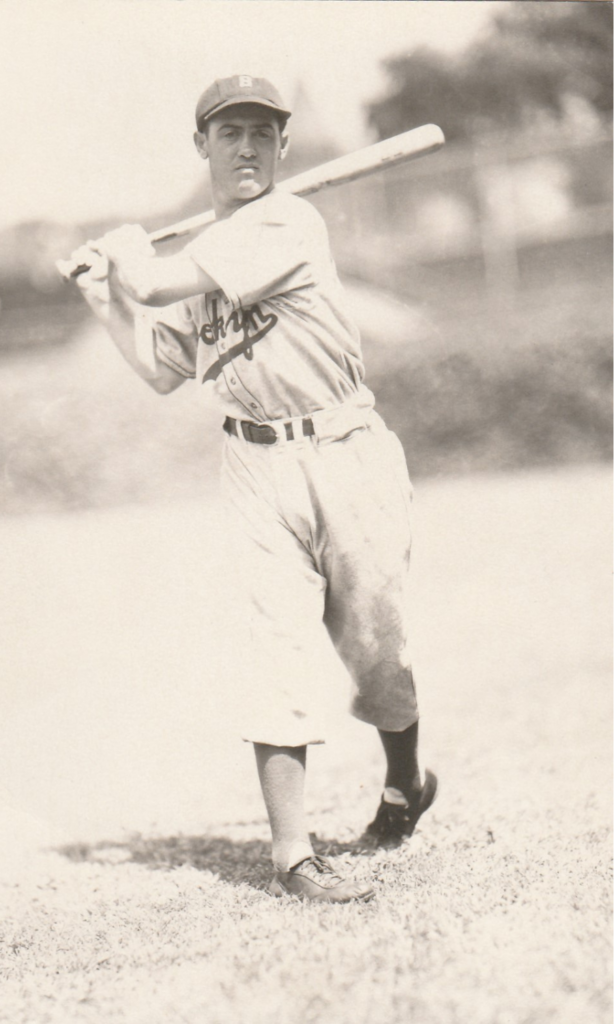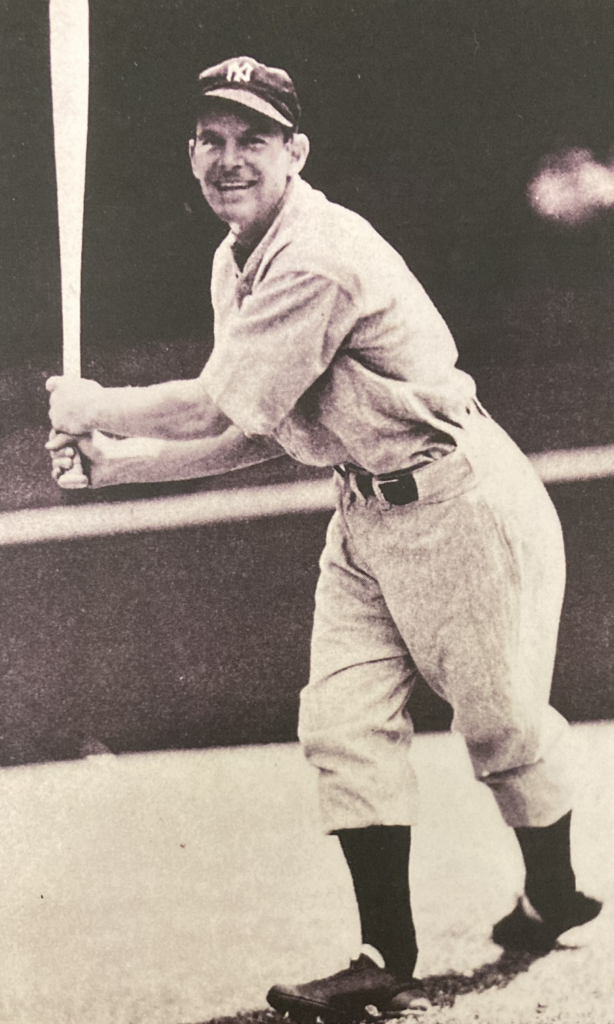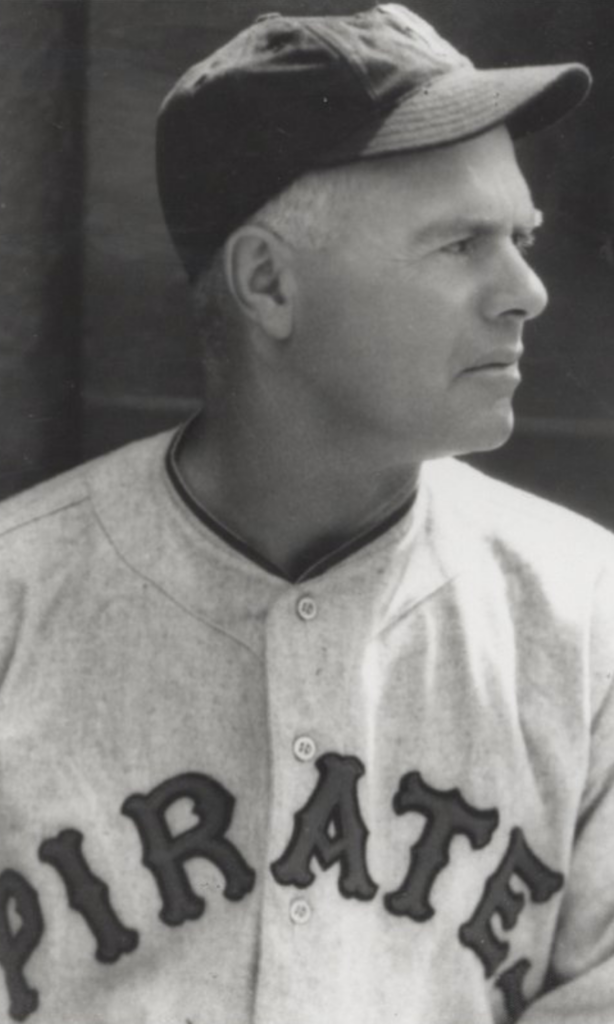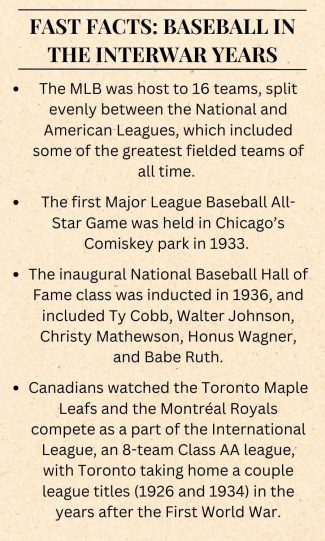
While only a few decades would separate World War One (1914-1918) from the Second World War (1939-1945), these decades were marked by significant events: the Great Depression, Fascism and Nazism spreading across Europe, rising international tensions, and… the Golden Age of Baseball. Regardless of the international economic and political struggles, baseball would continue to prove popular within North America as a pastime and spectator sport.
The Golden Age of Baseball typically describes four decades from 1920-1960, beginning at the end of the “Deadball Era.” During the interwar years, the Golden Age of Baseball featured some legends of the game, such as Lou Gehrig, Ted Williams, Babe Ruth, and Lefty Grove. At the same time, Canadian players were also carving their way into professional baseball, including Goody Rosen (Toronto, Ontario, 1937-1946), George “Twinkletoes” Selkirk (Huntsville, Ontario, 1934-1942), Frank O’Rourke (Hamilton, Ontario, 1912-1931), and player/manager George “Mooney” Gibson (London, Ontario, 1880-1967) to name just a few.




Canadians attempted to continue life as normal in the face of rising global tensions and the spread of Nazism, but it became too much to ignore on September 1, 1939, when German forces invaded Poland. The Second World War had begun. Britain and France declared war on September 3rd, with Canada joining a week later on September 10th.
The activities of daily life were set aside at the spark of another war. Many had experienced the hardships of World War One only a couple of decades earlier, and Canadian men and women were both eager, and scared, to again defend the freedom of the world. Among the ranks of the Canadian Armed Forces were countless recreational, amateur, semi-pro, and professional baseball players. Baseball would prove to be one of the most important pastimes throughout the war, keeping soldiers overseas occupied and encouraged, while the men, women, and children still at home enjoyed the sport to feel a sense of normalcy, tradition, and recreation.













